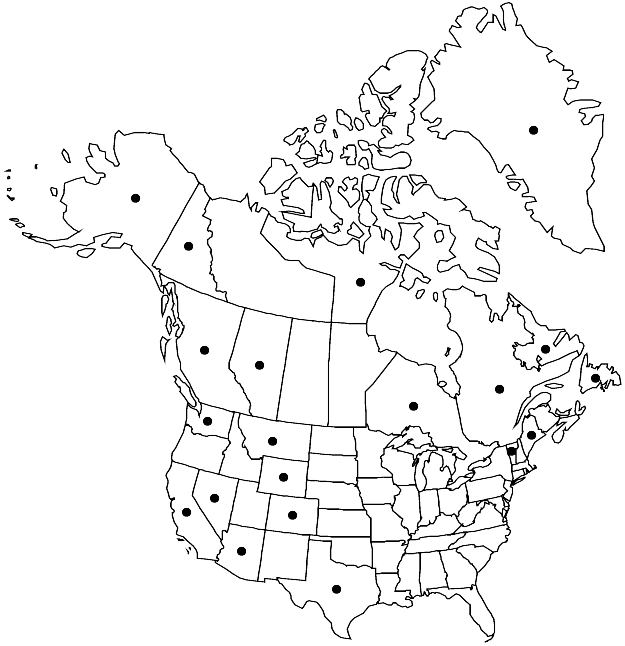Difference between revisions of "Pohlia obtusifolia"
Leafl. W. Bot. 6: 20. 1950.
FNA>Volume Importer |
FNA>Volume Importer |
||
| Line 10: | Line 10: | ||
|name=Bryum obtusifolium | |name=Bryum obtusifolium | ||
|authority=Villars ex Bridel | |authority=Villars ex Bridel | ||
| + | |rank=species | ||
|publication_title=Muscol. Recent. | |publication_title=Muscol. Recent. | ||
|publication_place=2(3): 52. 1803 | |publication_place=2(3): 52. 1803 | ||
| Line 16: | Line 17: | ||
|name=Pohlia cucullata | |name=Pohlia cucullata | ||
|authority=(Schwägrichen) Bruch ex Hochstetter | |authority=(Schwägrichen) Bruch ex Hochstetter | ||
| + | |rank=species | ||
}} | }} | ||
|hierarchy=Mielichhoferiaceae;Pohlia;Pohlia obtusifolia | |hierarchy=Mielichhoferiaceae;Pohlia;Pohlia obtusifolia | ||
| Line 40: | Line 42: | ||
-->{{#Taxon: | -->{{#Taxon: | ||
name=Pohlia obtusifolia | name=Pohlia obtusifolia | ||
| − | |||
|authority=(Villars ex Bridel) L. F. Koch | |authority=(Villars ex Bridel) L. F. Koch | ||
|rank=species | |rank=species | ||
| Line 55: | Line 56: | ||
|publication year=1950 | |publication year=1950 | ||
|special status= | |special status= | ||
| − | |source xml=https://jpend@bitbucket.org/aafc-mbb/fna-data-curation.git/src/ | + | |source xml=https://jpend@bitbucket.org/aafc-mbb/fna-data-curation.git/src/f50eec43f223ca0e34566be0b046453a0960e173/coarse_grained_fna_xml/V28/V28_316.xml |
|genus=Pohlia | |genus=Pohlia | ||
|species=Pohlia obtusifolia | |species=Pohlia obtusifolia | ||
Revision as of 21:12, 16 December 2019
Plants small to medium-sized, pale green, dull. Stems 0.3–0.8 cm. Leaves erect to ± spreading, broadly lanceolate, 0.7–1.4 mm; margins serrulate to serrate in distal 1/3; costa subpercurrent; distal medial laminal cells hexagonal or broadly rhombic, lax, 30–70 µm, walls thin. Specialized asexual reproduction absent. Sexual condition paroicous; perichaetial leaves scarcely differentiated, broadly lanceolate. Seta orange-brown. Capsule inclined 160–180°, stramineous to orange-brown, broadly pyriform, neck 1/3 urn length; exothecial cells elongate-rectangular, walls straight; stomata superficial; annulus present; operculum bluntly conic; exostome teeth yellow to brown, bluntly acute; endostome hyaline, basal membrane low, scarcely exceeding capsule rim to 1/3 exostome length, segments narrow, weakly keeled, broadly perforate, cilia absent. Spores 17–25 µm, distinctly roughened.
Phenology: Capsules mature summer (Jun–Aug).
Habitat: Soil, often in late snowmelt areas in alpine and subalpine zones
Elevation: high elevations
Distribution

Greenland, Alta., B.C., Nfld. and Labr., Nunavut, Ont., Que., Yukon, Alaska, Ariz., Calif., Colo., Maine, Mont., Nev., Tex., Vt., Wash., Wyo., Eurasia.
Discussion
Plants of Pohlia obtusifolia with sporophytes are generally small, but some sterile colonies in late snowmelt areas at high elevations form deeper cushions. When plants are sterile, the subtly cucullate leaves provide a clue to their identity; they are similar to those of P. drummondii, but the stems tend to be less red, the laminal cells are broader and thinner walled, and axillary gemmae are absent. Pohlia obtusifolia is paroicous (unlike P. drummondii, which is dioicous) and the capsules are barrel-shaped, with straight, rectangular walls (sinuate in P. drummondii and other gemmiferous species). The peristome of P. obtusifolia is relatively reduced, with slenderly triangular exostome teeth that are weakly pitted basally, a low endostomial basal membrane, and narrow segments that are weakly keeled but broadly perforate.
Selected References
None.